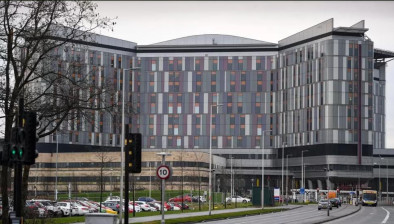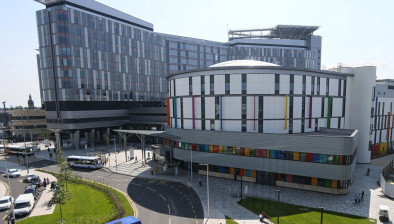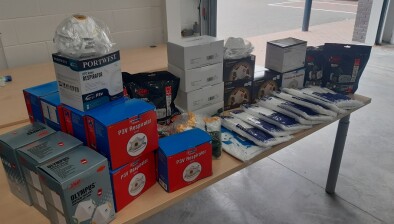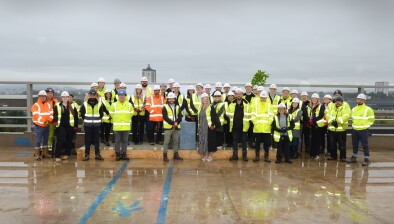Health board applied to have K15 insulation removed from Queen Elizabeth hospital three years ago
NHS Greater Glasgow and Clyde tried to have insulation removed from Queen Elizabeth University Hospital three years ago, despite having provided assurances that the material is safe, according to reports.

The Kingspan Kooltherm K15 insulation in place at the hospital was used in Grenfell Tower, which caught fire and claimed the lives of around 80 people in June, 2017.
Three years ago the health board said that hospital main contractor Multiplex provided assurances the material was properly installed and met “Scotland’s stringent building and fire safety regulations”.
A spokesman for the hospital said at the time: “The Queen Elizabeth University Hospital is one of the safest buildings in the UK in terms of fire engineering.
“Multiplex, the main contractor for the hospital construction, have assured NHSGGC that the Kingspan Kooltherm K15 insulation boards were properly installed to meet Scotland’s stringent building and fire safety regulations.
“The hospital itself is designed and equipped to the highest standards for fire safety.”
The Scottish Government also said it had been assured the insulation on the hospital which officially opened in July, 2015 was fitted correctly and met fire regulations.
A spokeswoman said: “The QEUH is designed and equipped to the highest standards for fire safety.
“NHSGGC has sought to assure us that the Kingspan Kooltherm K15 insulation boards were correctly installed to meet all current building and fire regulations in Scotland.
“The hospital also has a number of other fire prevention measures to ensure the safety of patients, staff and visitors at all times.”
However, the Herald on Sunday revealed yesterday that on March 7, 2018 the health board put forward a building warrant application to remove the K15 insulation and replace with 75mm thick Rockwool Rainscreen Duo Slab insulation. It also sought to remove and replace existing rainscreen cladding panels.
According to city council records, the application was later withdrawn and replaced in August, 2018 with applications to remove cladding, with no reference to removing the K19 insulation.
Evidence provided to the inquiry into the Grenfell disaster has heard that Kingspan marketed its K15 insulation with fire test certificates which did not represent the product being sold.
It has heard current and former staff of insulation manufacturer Kingspan tell about efforts they went to in order to convince the construction industry K15 was safe to use on buildings above 18m – despite a lack of genuine test data.
One former executive said that the firm was involved in a “deliberate and calculated deceit”, which involved marketing the product without solid test evidence.
Kingspan technical manager Ivor Meredith said he was uncomfortable with how the company’s K15 insulation was being marketed, and that he was “under pressure” to get test results that proved it was safe.
Evidence to the inquiry revealed that Kingspan sold its Kooltherm K15 insulation with an unrepresentative fire certificate based on a 2005 test which claimed it was safe for use on buildings higher than 18 metres.
Kingspan confirmed in October this year that the test certificates for Kooltherm K15 had been formally withdrawn.
These certificates have now been withdrawn from the market.
Evidence produced last week to the inquiry revealed that Kingspan senior staff knew the fire certificate for K15 was misleading for four years before they informed the public.
A board spokesman for NHS Greater Glasgow and Clyde told the Herald on Sunday: “At this time, there are no new requirements that necessitate the replacement of the Kingspan K15 insulation. However, we will, as a matter of course, ensure that we are responsive to any future changes in regulatory requirements. The hospital is designed and equipped to the highest standards for fire safety. It has heat and smoke fire alarm systems combined with automatic fire suppression sprinkler systems fitted in all areas, is equipped with designated fire-fighting apparatus and has fire evacuation lifts.
“The application for a building warrant was to remove K15 insulation and install an alternative cladding system only in areas where the insulation was used in conjunction with Alucobond ACM panels. This work has been completed.
“The panels on the rest of the building are suitable for use in combination with K15 insulation and remain. The Scottish Fire and Rescue Service have stated they are content with the fire risk assessment and status of the hospital.”

















